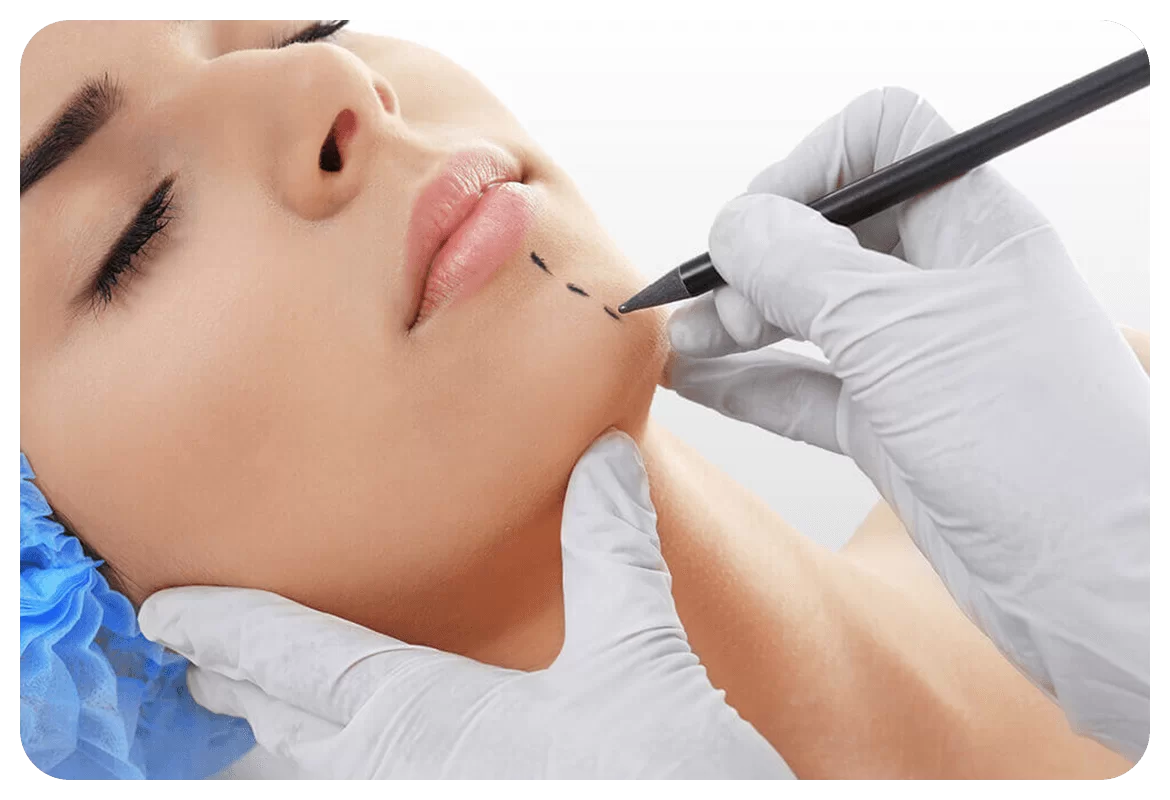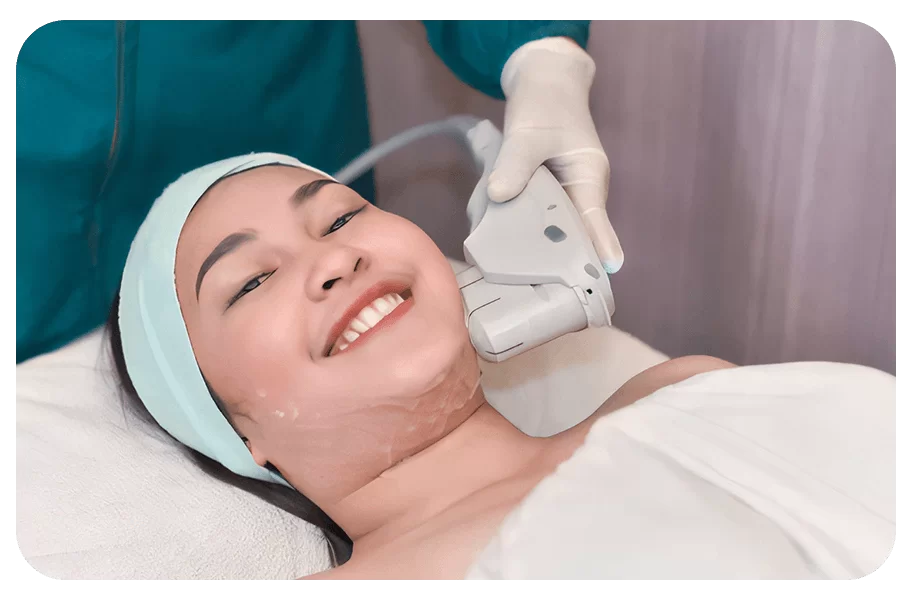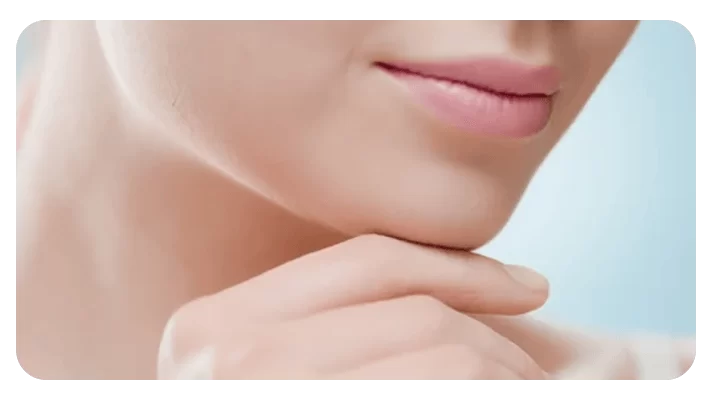Jawline Contouring in Abu Dhabi
Elyzee Hospital is one of the best hospital centers in Abu Dhabi, specializing in jawline contouring.

Best Facial Jawline Contouring Treatment in Abu Dhabi
An innovative cosmetic technique known as dermal filling involves injecting specialized gels made up of biocompatible substances such as hyaluronic acid under your skin’s surface. This safe method allows individuals who desire fuller lips and wrinkle free skin to accomplish these results without undergoing surgery.
This blog post aims to provide a thorough understanding of dermal fillers and its various aspects, including its advantages, best candidates for the procedure and how its’ done during consultation protocols and preparation. It will then offer practical information on how to recover post procedure successfully and what the expected outcomes are, along with frequently asked questions designed to address any concerns or queries one may have. We believe that this comprehensive overview utilizing respectful language will be thought provoking while still effectively conveying the full scope of filler treatments.
The Benefits of this Procedure
Fillers offer a range of benefits, making them a popular choice among individuals seeking facial rejuvenation and enhancement. Some key advantages of the procedure include:
1. Restoring volume
As we age, our skin loses volume, leading to a sunken and hollow appearance. For those seeking to address the loss of facial volume in certain areas like cheeks, temples and lips – fillers serve as an effective option. They work by replenishing volume which restores a fuller and youthful appearance that many people desire.
2. Reducing wrinkles and lines
Fine lines, wrinkles and creases on your face? No need to worry – with fillers you have a straightforward answer. You’ll see immediate results while targeting specific regions such as nasolabial folds or marionette lines around your lips & chin area!


3. Enhancing facial contours
To achieve a more balanced facial appearance, targeted injections of fillers may be employed to contour areas like your chin or jawline. Skillfully administered by a professional, this technique shapes key features with precision for impactful results.
4. Minimal downtime
Unlike surgical procedures, fillers require minimal downtime, allowing individuals to resume their daily activities immediately after the treatment. This makes fillers a convenient option for those seeking noticeable results without the need for a lengthy recovery period.
5. Customizable and reversible
Customization is key when it comes to providing quality healthcare services. Fillers have emerged as an effective solution for achieving a high degree of personalization by catering to individuals’ specific requirements and preferred outcomes. Furthermore. Certain filler categories are reversible if needed. Underscoring the adaptability and versatility that make them such a popular choice.
The Best Candidate for this Procedure
- The ideal candidates for fillers are individuals who:
- Desire to address specific concerns such as volume loss, wrinkles, or facial asymmetry
- Are in good overall health and have realistic expectations about the outcome of the procedure
- Have adequate skin elasticity to ensure optimal results
To ensure that your aesthetic aspirations are met effectively it’s imperative to seek counsel from a well versed and competent healthcare provider who can determine if fillers are the most fitting solution.
Consultation with Doctor and Preparation for the Procedure
The initial consultation with a medical professional involves a comprehensive evaluation of various anatomical factors such as facial skeleton structure and dermal quality to determine if you’re an ideal candidate for dermal fillers. Once assessed as safe for injection treatments by your provider. They’ll present detailed information about what’s involved in treatment along with any potential risks or complications that might occur during these processes so that every doubt can get addressed successfully.
- To prepare for the filler procedure, the provider may provide specific guidelines, which might include:
- Avoiding certain medications or supplements
- Undergoing preoperative medical tests to ensure good overall health
- Discussing any underlying medical conditions or medications that could affect the procedure
- Stopping smoking, as smoking can impair the healing process and affect the results
The provider will provide detailed pre-operative instructions to help the patient prepare both physically and mentally for the filler procedure.
What's Happening During the Procedure
The filler procedure typically involves the following steps:
1. Cleansing the treatment area: The healthcare provider cleanses the areas of the face where the filler will be injected to ensure a sterile environment.
2. Numbing the treatment area: To enhance patient comfort, a topical numbing cream or local anesthesia may be applied to the treatment area prior to the injections.
3. Injecting the filler: Using a fine needle or cannula, the healthcare provider carefully injects the filler into the predetermined areas of the face. The provider may use various injection techniques to achieve the desired results.
4. Massaging and evaluating the results: After injecting the filler, the provider assesses the results and may make additional injections or adjustments to ensure symmetry and optimal outcomes.
5. Cleaning and post-procedure care: In some cases, the provider may gently massage the treated areas to distribute the filler evenly and smooth out any lumps or bumps.
The procedure typically takes around 30 minutes to an hour, depending on the areas being treated and the specific technique used.
After the Procedure and Recovery
Following the filler procedure, patients may experience some mild swelling, bruising, and redness in the treated areas. Temporary effects are often experienced after the procedure but they typically subside within a short period of time. Your healthcare provider may offer guidance for after the procedure that could involve:
- Applying ice or cold compresses to reduce swelling and discomfort
- Avoiding excessive sun exposure and using sunscreen to protect the treated areas
- Avoiding strenuous exercise and activities that could increase blood flow to the face
- Following a gentle skincare routine and avoiding harsh products or treatments in the treated areas
Patients can typically resume their normal activities immediately after the procedure, although it is important to follow the specific instructions provided by the healthcare provider for optimal healing and results.
Final Result
The final results of fillers are visible immediately after the procedure, although minor swelling or bruising may temporarily mask the full outcome. As the swelling subsides and the filler settles into the tissue, the treated areas will appear smoother, plumper, and more youthful. The results typically last several months to a year, depending on the type of filler used and individual factors such as metabolism and lifestyle.
Conclusion
Fillers offer a versatile and effective solution for individuals seeking facial rejuvenation, volume restoration, and enhancement. With their customizable nature, minimal downtime, and noticeable results, fillers have become a popular choice among patients looking for non-surgical options. By consulting with a qualified healthcare provider and following proper pre and post-procedure care, individuals can achieve a refreshed and more youthful appearance with the help of fillers.

FAQs
No, fillers are not permanent. The duration of results varies depending on the type of filler used, the treated area, and individual factors. On average, fillers last several months to a year. Periodic touch-up treatments can help maintain the results over time.
No, fillers are not permanent. The duration of results varies depending on the type of filler used, the treated area, and individual factors. On average, fillers last several months to a year. Periodic touch-up treatments can help maintain the results over time.
To ensure a safer experience when getting fillers that have been approved by the FDA and administered by qualified healthcare professionals its’ important to consider their potential risks from a medical standpoint fully. As such. Before undergoing this procedure. One must notify their physician of any relevant allergies or other health concerns.
Some types of fillers, patrician dermatology its’ possible to reverse particular fillers by using hyaluronidase. This enzyme is effective in breaking down fillers sourced from hyaluronic acid and can lead to partial or full reversal. aryl those made with hyaluronic acid, can be partially or fully reversed using an enzyme called hyaluronidase. This enzyme can dissolve the filler if necessary, providing a level of reversibility and flexibility.
Yes, fillers can be combined with other cosmetic procedures to achieve comprehensive facial rejuvenation. Common combinations include combining fillers with Botox injections, laser treatments, or surgical procedures for a more holistic approach to facial enhancement. The medical professional shall assess individual requirements and objectives of the patient to design a personalized care strategy.
Although fillers are generally considered safe for use on one’s face and/or body areas where needed; potential drawbacks and associated risks should not be overlooked either. The side-effects could range from minor short-lived issues such as temporary swelling/bruising/redness/itching/discomfort in injected zones; while some serious consequences might lead to an infection/allergic reaction/or even vascular occlusion; which if neglected could result in more severe situations. Approaching a licensed healthcare provider skilled with filler administration would be advisable keeping in mind avoiding these problems.
We wish to emphasize that the intention of this blog post is solely informative as it does not substitute personalized medical advice. It would be prudent to seek guidance from a licensed medical practitioner who can tailor their recommendations based on your unique situation ensuring fillers are appropriate for your individual health needs. Further. They can address any specific concerns or questions which may arise throughout the process.
Make An Appointment

